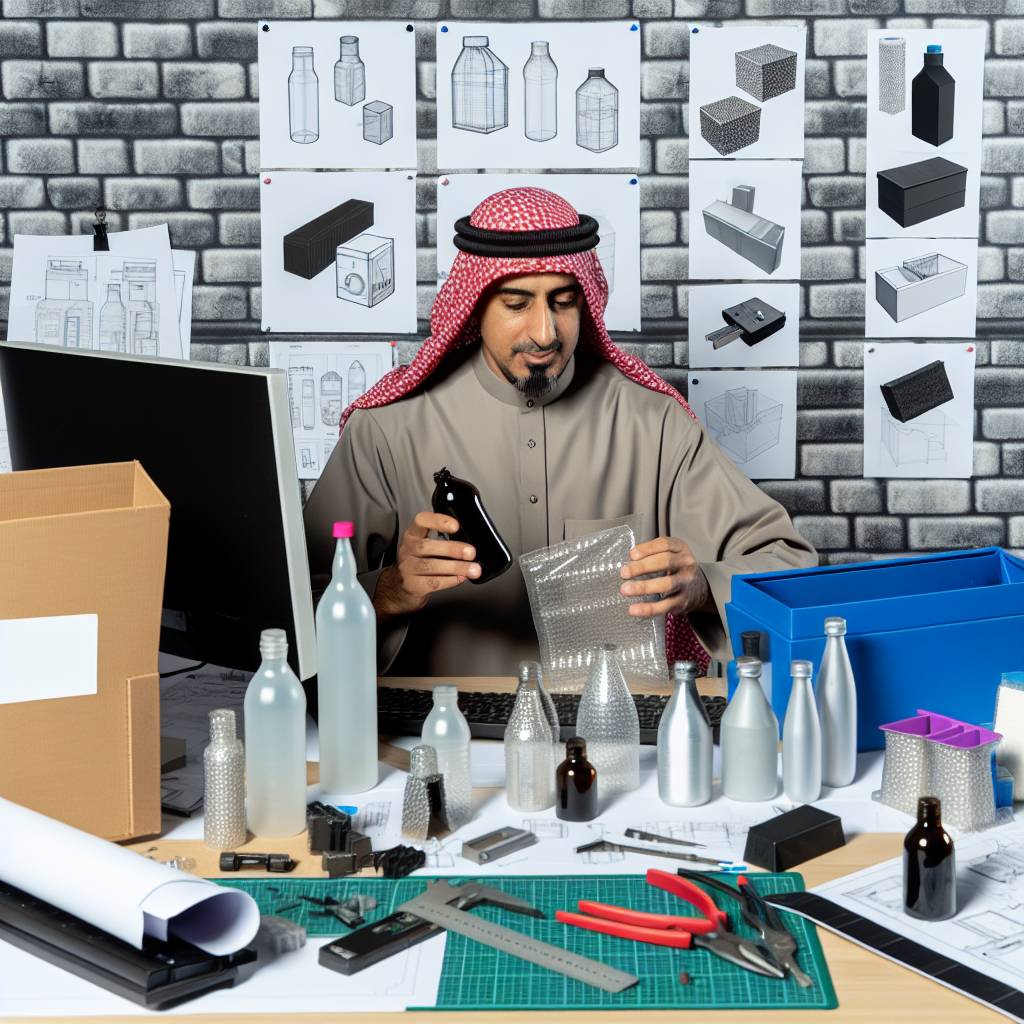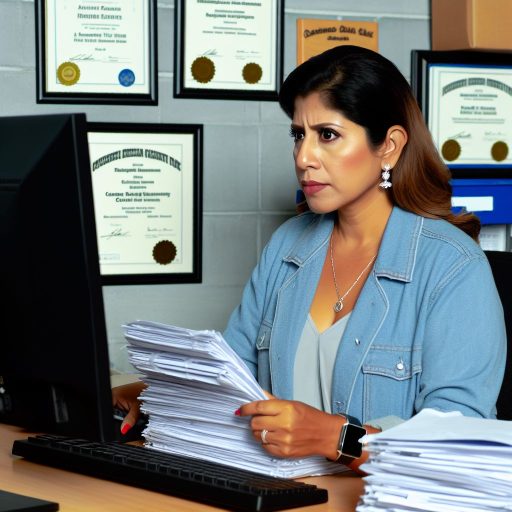Introduction:
As a packaging engineer, having a strong portfolio is essential to showcase your skills and expertise in the field.
A well-organized portfolio not only demonstrates your capabilities but also sets you apart from other candidates in the industry.
When building a portfolio as a packaging engineer, there are key components that you should include to make it comprehensive and impactful.
These elements will help potential employers or clients understand your qualifications and experience effectively.
Understanding the Industry
As a packaging engineer, it is crucial to have a deep understanding of the industry to build a successful portfolio.
Researching the current trends and demands in the packaging industry will provide you with valuable insights into what companies are looking for in packaging engineers.
By staying informed about the latest advancements in technology and materials used in packaging design, you can demonstrate your expertise and knowledge in your portfolio.
Companies are constantly evolving, and so are their expectations of packaging engineers.
By identifying the specific skills and experiences that companies are seeking, you can tailor your portfolio to highlight your strengths and qualifications.
Whether it’s proficiency in CAD software, knowledge of sustainable packaging solutions, or experience with quality control processes, showcasing these skills in your portfolio will set you apart from other candidates.
In the ever-changing landscape of the packaging industry, having a diverse range of skills and experiences is essential.
By staying updated on new technologies and materials, you can demonstrate your ability to adapt to changing trends and offer innovative solutions to packaging challenges.
Including projects in your portfolio that showcase your expertise in areas such as smart packaging, biodegradable materials, or interactive packaging designs will highlight your creativity and forward-thinking approach.
Understanding the industry is the first step towards building a successful portfolio as a packaging engineer.
By researching current trends, identifying key skills, and staying updated on new technologies, you can create a compelling portfolio that showcases your expertise and sets you apart from the competition.
Remember to tailor your portfolio to align with the specific needs of companies in the packaging industry and highlight your unique qualifications and experiences.
When building a portfolio as a packaging engineer, it’s crucial to showcase relevant projects that highlight your skills and creativity.
Here are some key points to keep in mind:
Showcase relevant projects:
- Include a variety of packaging design projects to demonstrate your range of abilities.
- Highlight projects that showcase your problem-solving skills in addressing packaging challenges.
- Choose projects that align with the types of clients you want to attract, showing your ability to meet their specific needs.
Each project should be thoroughly documented to provide a clear picture of your work:
- Provide detailed descriptions of each project, including the objectives, challenges faced, and your approach to solving them.
- Include images that showcase the packaging designs from different angles and perspectives.
- Highlight any innovative techniques or materials used in the project to highlight your creativity and expertise.
By curating a portfolio that showcases your skills, creativity, and problem-solving abilities, you can effectively demonstrate your value as a packaging engineer to potential clients or employers.
Transform Your Career Today
Unlock a personalized career strategy that drives real results. Get tailored advice and a roadmap designed just for you.
Start NowUncover the Details: Networking Tips for Logistics Operations Professionals
Highlight Technical Skills:
- List technical skills such as proficiency in CAD software.
- Demonstrate knowledge of materials and manufacturing processes.
- Show expertise in packaging testing methods.
- Include any certifications or training related to packaging design and engineering.
- Emphasize your ability to create functional and cost-effective packaging solutions.
As a packaging engineer, having strong technical skills is essential to succeed in the field.
One of the key technical skills that you should possess is proficiency in CAD software.
This software is commonly used in packaging design to create precise and detailed drawings of packaging solutions.
Being able to efficiently work with CAD software can significantly enhance your productivity and the quality of your designs.
In addition to CAD software proficiency, it is crucial to have a deep understanding of materials and manufacturing processes.
Knowledge of different materials, their properties, and how they interact with manufacturing processes is essential for designing effective packaging solutions.
By understanding the characteristics of materials, you can create packaging that is not only functional but also durable and aesthetically pleasing.
Furthermore, familiarity with packaging testing methods is a valuable technical skill for a packaging engineer.
Testing is a critical part of the packaging design process as it ensures that the packaging meets industry standards and effectively protects the product.
Knowing how to conduct various tests, interpret the results, and make necessary adjustments is essential for creating reliable packaging solutions.
Moreover, any certifications or training related to packaging design and engineering can demonstrate your commitment to professional development and your expertise in the field.
Whether you have completed a specialized packaging design course or obtained a relevant certification, make sure to highlight these achievements in your portfolio.
This can set you apart from other candidates and showcase your dedication to continually enhancing your skills and knowledge.
Finally, emphasize your ability to create functional and cost-effective packaging solutions.
Employers are looking for packaging engineers who can not only design innovative packaging but also consider factors such as production costs and sustainability.
Being able to balance functionality, aesthetics, and cost efficiency in your designs is a valuable skill that can make you a valuable asset to any organization.
Showcasing your technical skills as a packaging engineer is essential for building a strong portfolio.
By highlighting your proficiency in CAD software, knowledge of materials and manufacturing processes, and expertise in packaging testing methods, you can demonstrate your capabilities as a skilled and capable packaging engineer.
Showcase Your Business Today
Reach thousands of readers actively exploring professional services. Publish your business profile and grow your audience now.
Publish NowAdditionally, including any certifications or training related to packaging design and engineering, and emphasizing your ability to create functional and cost-effective packaging solutions can further strengthen your portfolio and impress potential employers.
Uncover the Details: Material Handling: Importance in Logistics
Include personal projects and passion projects:
As a packaging engineer, it is essential to showcase your creativity and innovation through personal and passion projects.
These projects not only demonstrate your skills but also highlight your enthusiasm for the field.
Share personal projects:
- Share any personal projects you have worked on that reflect your packaging design skills.
- Discuss the challenges you faced during these projects and how you overcame them.
- Highlight the unique elements of each project that set them apart from traditional packaging designs.
Talk about passion projects:
- Describe any passion projects you have undertaken related to packaging design.
- Explain the inspiration behind these projects and how they reflect your personal style and approach.
- Demonstrate your commitment to the field by showcasing these projects and discussing their impact on your career.
Highlight your dedication and enthusiasm:
- Emphasize your dedication to packaging engineering by showcasing a variety of personal and passion projects.
- Show how these projects reflect your enthusiasm for the field and willingness to push boundaries.
- Discuss how these projects have shaped your skills and knowledge as a packaging engineer.
Including personal projects and passion projects in your portfolio is a great way to demonstrate your creativity, innovation, and dedication to the field of packaging engineering.
These projects showcase your unique style and approach, setting you apart from other professionals in the industry.
So don’t hesitate to share your best work and highlight your passion for packaging design!
You Might Also Like: Rail Yard Engineer Physical and Mental Demands
Provide testimonials and recommendations:
- Include testimonials from clients or colleagues who can vouch for your skills and professionalism.
- Ask for recommendations from professors or mentors in the packaging industry to add credibility to your portfolio.
- Highlight any awards or recognition you have received for your work in packaging design.
Testimonials and recommendations play a crucial role in building a strong portfolio as a packaging engineer.
They serve as social proof of your abilities and help potential employers or clients gain confidence in your skills and expertise.
Here are some strategies to effectively incorporate testimonials and recommendations into your portfolio:
Include testimonials from clients or colleagues:
Reach out to previous clients or colleagues who can speak to your work ethic, problem-solving skills, and overall professionalism.
Ask them to write a short testimonial highlighting your strengths and the impact you made on their packaging projects.
Including these testimonials on your portfolio website or in your physical portfolio can help showcase your abilities and build trust with potential employers or clients.
Ask for recommendations from professors or mentors:
Professors or mentors in the packaging industry can provide valuable insights into your abilities and potential as a packaging engineer.
Reach out to them and request a recommendation that speaks to your technical skills, creativity, and commitment to excellence.
Including these recommendations in your portfolio can add credibility and demonstrate that you have the support of industry experts who recognize your talent.
Highlight awards or recognition:
If you have received any awards or recognition for your work in packaging design, be sure to showcase them in your portfolio.
Awards serve as concrete evidence of your skills and achievements, and they can help differentiate you from other candidates.
Whether you’ve won a design competition, received praise from industry publications, or been acknowledged for your innovative packaging solutions, be sure to highlight these accolades in your portfolio to impress potential employers or clients.
By incorporating testimonials, recommendations, and awards into your portfolio as a packaging engineer, you can effectively demonstrate your skills, professionalism, and credibility to potential employers or clients.
These elements provide valuable validation of your abilities and help you stand out in a competitive industry.
Make sure to leverage the power of social proof in your portfolio to showcase your expertise and attract exciting opportunities in the packaging field.
Gain More Insights: Freight Agent Impact on Supply Chain Efficiency

Create a professional presentation:
Your portfolio should showcase your skills, expertise, and experience in a visually compelling way.
Design a visually appealing and easy-to-navigate portfolio that reflects your attention to detail and design aesthetic.
Use high-quality images and graphics to showcase your work effectively.
Make sure the layout is clean and organized to make a strong first impression on potential employers.
Design a visually appealing portfolio:
Choose a clean and professional layout that is easy to navigate.
Consider using a consistent color scheme and typography to maintain a cohesive look throughout your portfolio.
Use high-quality images and graphics:
When showcasing your work, use high-quality images and graphics.
This will help potential employers understand the scope of your work and the details you put into each project.
Consider including before-and-after images to demonstrate your problem-solving skills.
Organize your portfolio effectively:
Make sure the layout of your portfolio is clean and organized.
Arrange your projects in a logical order, starting with your best work first.
Include a table of contents or navigation menu to help employers easily find the projects they are interested in.
Consider adding labels or captions to provide context for each project.
By creating a professional presentation for your portfolio, you can make a strong first impression.
Remember, your portfolio is a reflection of your skills and expertise as a packaging engineer.
Take the time to design it thoughtfully and effectively.
Showcase Your Business Today
Reach thousands of readers actively exploring professional services. Publish your business profile and grow your audience now.
Publish NowNetwork and Seek Feedback:
Share your portfolio with industry professionals.
Seek feedback on ways to improve and enhance it.
Attend networking events and conferences.
Connect with potential employers or clients.
Use feedback to make necessary adjustments.
Update your portfolio to make it stronger.
- Share your portfolio with industry professionals.
- Seek feedback on ways to improve and enhance it.
- Attend networking events and conferences.
- Connect with potential employers or clients.
- Use feedback to make necessary adjustments.
- Update your portfolio to make it stronger.
Building a Strong Portfolio as a Packaging Engineer
Building a strong portfolio as a packaging engineer is crucial to showcase your skills and expertise in packaging design.
It is essential to continuously update and improve your portfolio to remain competitive in the field.
I encourage you to start working on your portfolio today and take proactive steps to highlight your experiences in packaging design.
Additional Resources
Building a Resilient Biomass Supply: A Plan to Enable the …
Investment Portfolio | Trive Capital
[E-Books for Sale]
The Big Book of 500 High-Paying Jobs in America: Unlock Your Earning Potential
$19.99 • 500 High-Paying Jobs • 330 pages
Explore 500 high-paying jobs in America and learn how to boost your career, earn more, and achieve success!
See All 500 High-Paying Jobs of this E-Book
1001 Professions Without a Degree: High-Paying American Jobs You Can Start Now
$19.99 • 1001 Professions Without a Degree • 174 pages
Discover 1001 high-paying jobs without a degree! Unlock career tips, skills, and success strategies for just $19.99!




